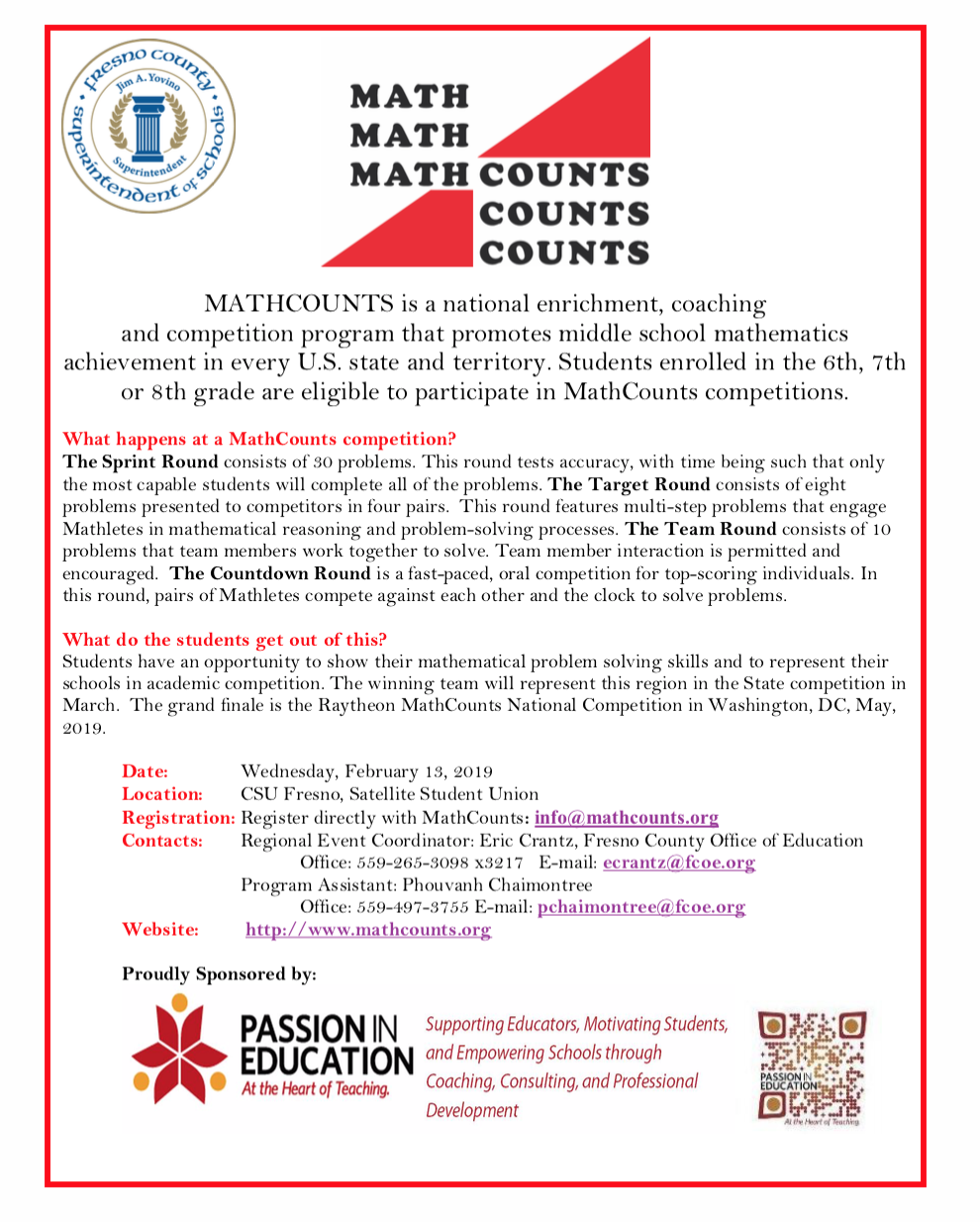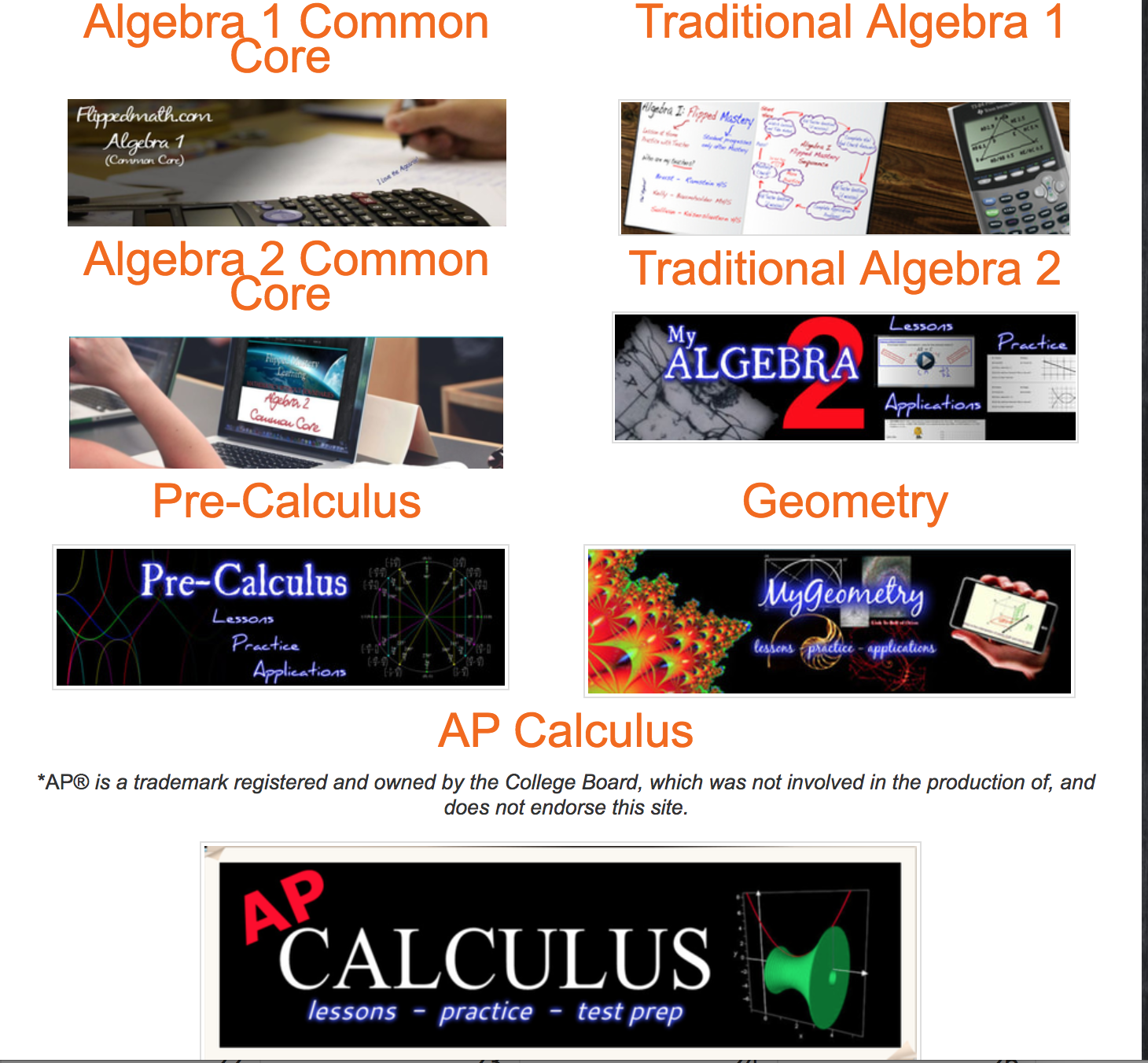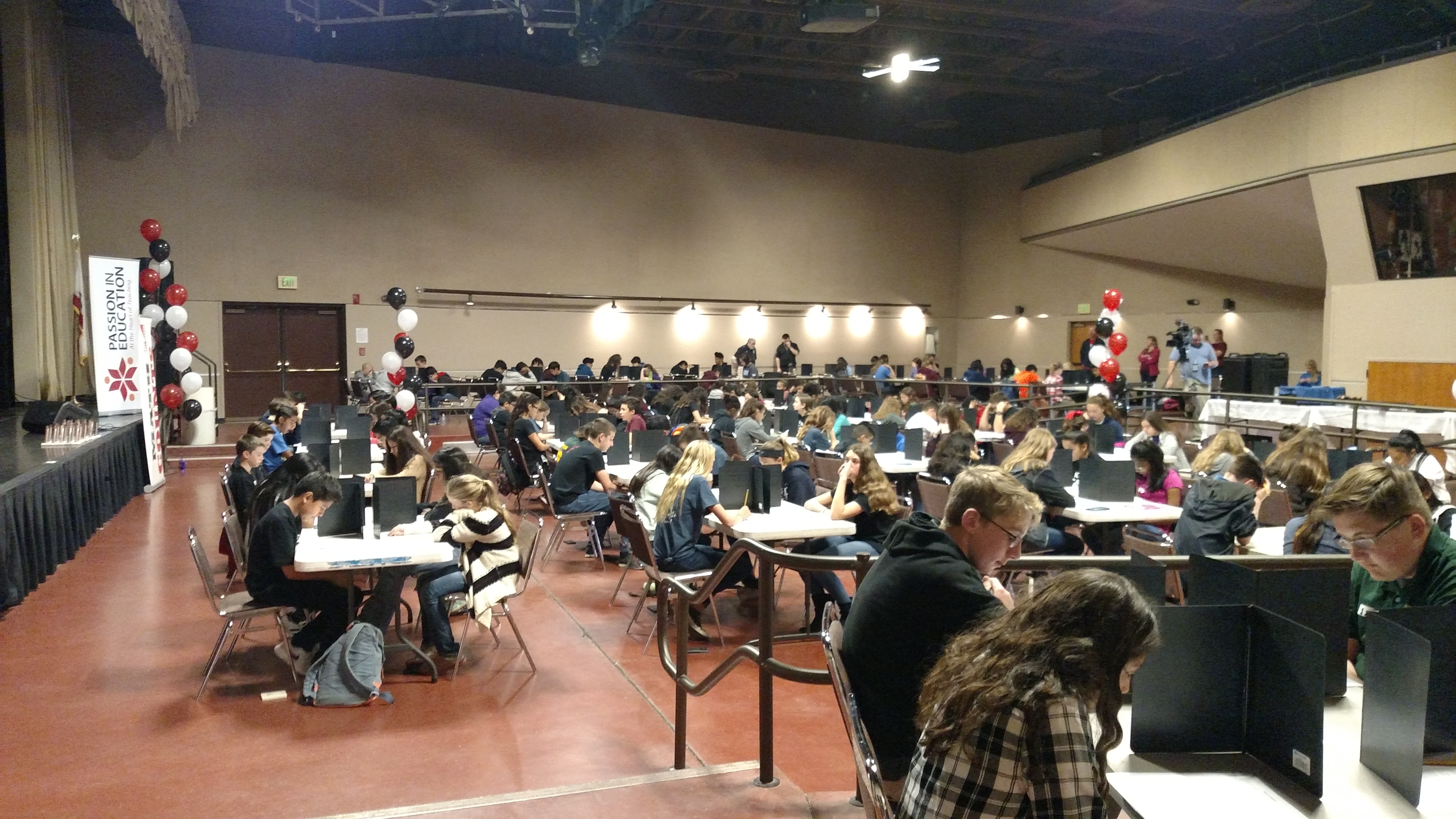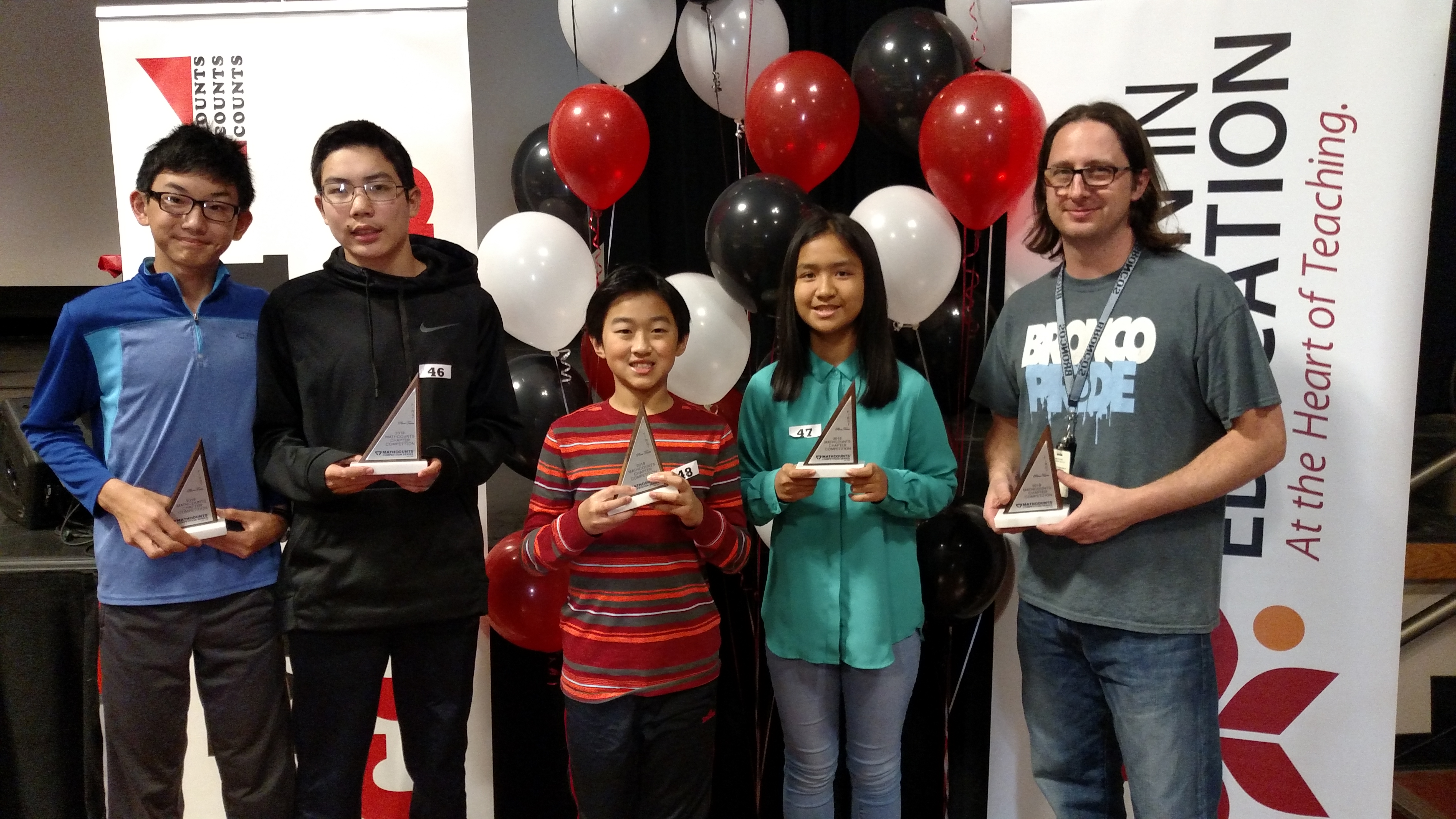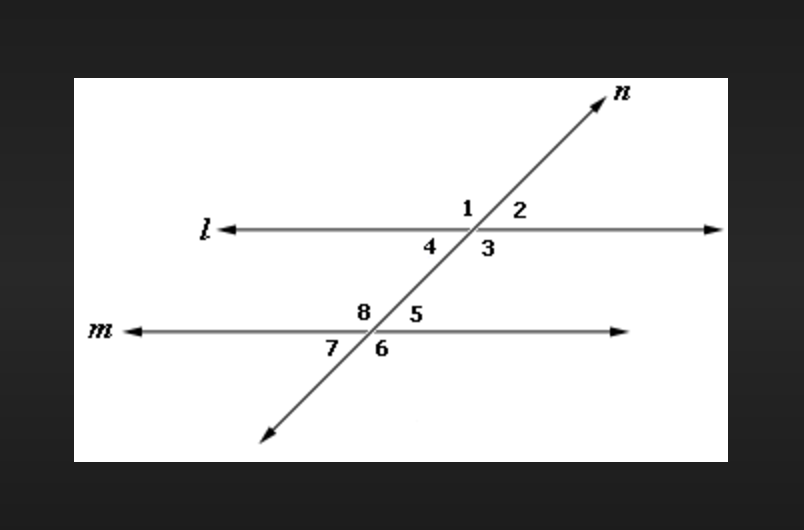Category Archives: Mathematics
MATHCOUNTS
MathCounts is a mathematics competition for student in 6th-8th grade. This event takes place on February 13, 2019, and is held at Fresno State in the Satellite Student Union. Registration must take place on the MathCounts website: https://www.mathcounts.org/ There is a fee, which must be paid directly to MathCounts.
From that point, MathCounts will contact us, and we will get specifics out in mid-January regarding parking and start-end times for the event.
Please consider joining us! If you are unsure and would like to observe/visit the event in anticipation of future participation, please contact me.
Jonathan Dueck\Director, STEM Education\Office of Fresno County\Superintendent of Schools\1111 Van Ness Ave\Fresno, CA 93721\(559) 497-3792 \jdueck@fcoe.org

We provide engaging math programs to U.S. middle school students of all ability levels to build confidence and improve attitudes towards math and problem solving.

A national middle school mathematics competition that builds problem solving skills and fosters achievement through four levels of fun, in-person “bee” style contests.

A national middle school mathematics enrichment program that gives educators the resources and guidance needed to run math clubs in schools and other groups.

A national middle school contest that blends math, creativity, art and technology and challenges students to produce a video solving a math problem in a real-world setting.
It’s Autumn, and that means leaves are falling! Amber’s house occupies 2650 ft2
in the middle of a 50-foot by 80-foot parcel of land, and the leaves that fall cover the ground
all around her house. If it takes Amber’s family 4.5 hours to rake all the leaves…
BUILDING MODERN CLASSROOMS THAT MEET THE NEEDS OF ALL LEARNERS
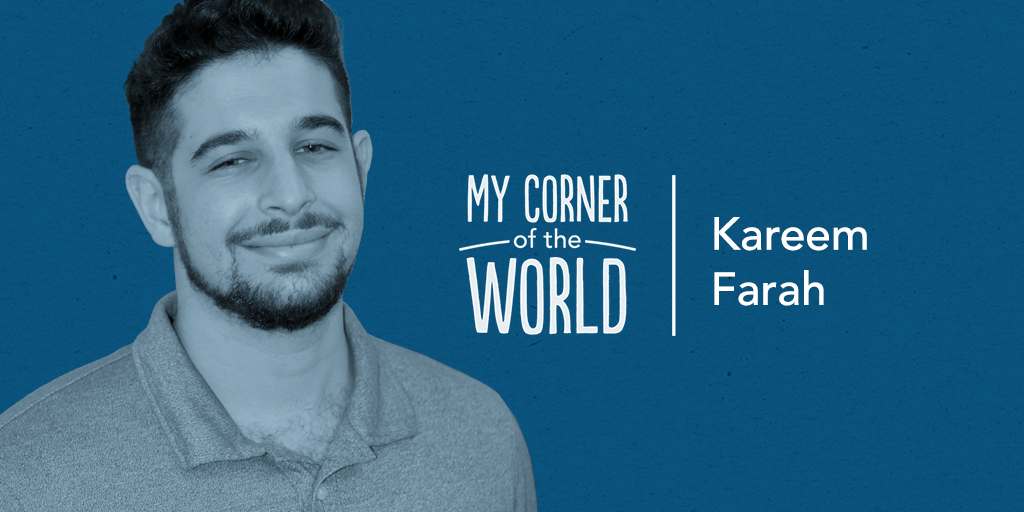
by Kareem Farah | 09.11.18
A couple of years ago, I started my fourth year of teaching high school math at a new school in Washington, D.C. What struck me right away was the diversity of learning levels in my classroom. More specifically, how many of my new students believed they just didn’t belong in a math classroom at all.
I knew I had to shift that mindset – and that meant changing my instructional model in a significant way. I had to meet the needs of my quickest learners while simultaneously providing the appropriate support for my students with critical learning gaps. I worked to develop a three-pronged approach built on blended instruction, self-paced structure and mastery-based assessment.
“Blended learning” involves leveraging technology in the classroom to replace my math lectures with instructional videos. My instructional videos are created simply by screencasting my PowerPoint presentations with my voice recorded over. By removing the traditional lecture from my class, I am free to spend my entire class time working individually and in small groups with students.
By blending my instruction, it allows my students to learn at their own pace. Students are no longer reliant on a short presentation at the beginning of class to access the content. When students walk into my classroom now, they look at the publicly displayed pacing tracker to remind themselves which lesson they’re working on. Each day, they pick up where they left off the day before, ensuring they are only progressing when they are ready. My students control where they go and what they do. I spend the class period going over lesson revisions with individual students and reteaching concepts to small groups.
My class is “mastery-based,” meaning my students can’t move to the next lesson without showing mastery on the previous lesson. At first, my students have intense emotional reactions to this: They’ve turned something in, and now, I am telling them it does not exhibit mastery and pushing them to revisit their thinking and try again. It requires a shift in mindset from completion to mastery. To get there, my class revolves around the core components of revision, reassessment and reflection to facilitate a daily journey to mastery.
Although there is initial resistance, within a few weeks, every student experiences authentic mastery. Every student learns what it feels like to travel through a lesson and work through setbacks. Every student experiences excellence.
This model is tough for my students at the beginning of the school year – but it’s also tough for me. I have to be very consistent and accept a level of chaos. I have to be patient and trust that the transformation will happen. If a student isn’t using their time productively, I do not micro-manage their behaviors. I have an open and honest conversation with them about their use of time. We discuss the real implications of their decisions, and I put the responsibility on them to use their time wisely. Eventually, after seeing the impact of their actions, they develop into self-directed learners who take control of their learning process. That early chaos pays off.
If you’re a teacher who wants to try my approach, my first piece of advice is: Do not be afraid to take a risk. When I started my model, my level of understanding of technology was nothing special, and my experience with self-pacing and mastery-based learning was limited. However, I felt comfortable taking major instructional risks because I knew the status quo was unacceptable. To support teachers in adapting my model, I have developed The Modern Classrooms Project, a nonprofit that helps teachers redesign their learning experience to infuse blended, self-paced and mastery-based instruction to meet the needs of all learners. To learn more about my nonprofit, you can visit www.modernclassrooms.org.
As you reconsider your own learning model, you have to take a step back and let go of your narratives about what teaching and learning look like and ask yourself, “What do my students need?” When teachers ask themselves that question, we so often land in the same place. We know that students should only progress when they have exhibited mastery. We know kids need to learn at their own pace. We know kids need individualized instruction. And as teachers, we can’t be afraid to take risks to meet those needs. We have to be brave enough to let go and try something new.
California Mathematics Council Awards and Scholarships
CMC Awards and Scholarships
CMC North Mini Grants: Need supplies or materials for your class? Are you a member of CMC in the Northern Region (See your member profile)? Apply for a CMC North Mini Grant. Contact Linda Flood for more information at minigrant.CMCN@gmail.com. Deadlines to apply is November 1 and March 1.
CA Math Festival Scholarships: In order to expand the opportunity for K-8 schools throughout California to benefit from the exciting learning of a Math Festival, CMC is offering up to a $1,000 scholarship to partially fund your school’s daytime or daytime/evening Festival. Deadline to apply is November 1.
For more details about the Math Festival program including the fees, visit the Math Festival website.
Teach yourself Mathematics via Flipped Classroom!
MATHCOUNTS!
Each February, Fresno County Office of Education provides a time and place for MATHCOUNTS Competition. MATHCOUNTS offers fun and engaging programs that get middle school students excited about math. These programs include the MATHCOUNTS Competition Program, the MATHCOUNTS Club Program, and the MATHCOUNTS Reel Math Challenge. This year 17 schools competed at The Satellite Student Union at Fresno State.
Winning team, Granite Ridge in Clovis!
Thank you, Jon Dueck for all your work in providing this competition.
Math Rules
Looking for Algebra 1 and Math 1 teachers!
If you are an Algebra I or Math I teacher, please see below.
WestEd, a not-for-profit educational research agency, has been funded by the U.S. Department of Education to conduct a study during the fall 2017 semester to evaluate the Querium StepWise™ Virtual Tutor for Algebra. StepWise is an online supplemental homework and quiz program that uses artificial intelligence to help students improve their mathematics problem solving. Aligned with Common Core State Standards for Mathematics, the intelligent tutoring system provides real-time, personalized tutoring to Algebra 1 students with the goal of achieving outcomes similar to those found with 1:1 tutoring.
Participating math teachers will receive stipends up to $850 for their involvement in this 8-week study! To participate, teachers must: a) be currently teaching Algebra I, and b) have at least part-time 1:1 student access to a computer, laptop, or tablet.
Please indicate your interest in participating by Friday, May 5th:
https://www.surveymonkey.com/r/QueriumStudy
Please also forward this information to any Algebra 1 teachers who you think might be interested in participating. We look forward to the opportunity to work with you!
Sincerely,
Bryan Matlen, Ph.D.
Research Associate, WestEd, STEM program quierum@wested.org
Parallel Lines Cut By a Transversal
Multiplication Song
This is an algorithm but students don’t know WHY it works. That is what they NEED to know. ~Sandy
